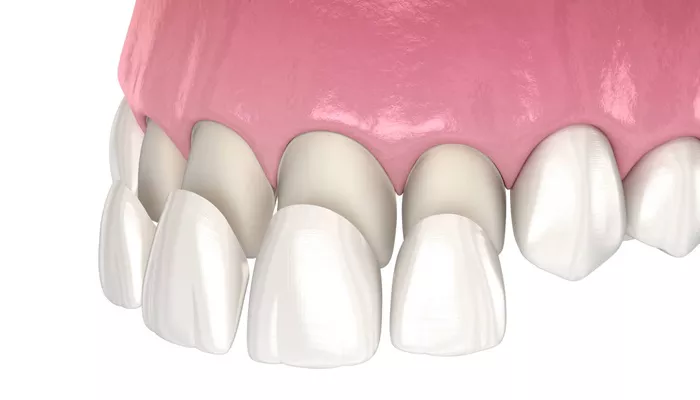Teeth whitening is a popular cosmetic dental procedure aimed at enhancing the brightness of one’s smile. However, many individuals experience uneven results, leading to dissatisfaction and self-consciousness. This article explores the causes of uneven teeth whitening and provides comprehensive methods to achieve a more uniform result.
Causes of Uneven Teeth Whitening
Understanding the reasons behind uneven teeth whitening is crucial for addressing the issue effectively. Here are some common causes:
1. Differential Response to Bleaching Agents
Each tooth responds differently to bleaching agents due to variations in enamel thickness and composition. For instance, the edges of teeth often lighten faster than the inner areas because the bleaching agent penetrates the enamel more quickly at the edges. Thicker enamel in the center can delay the whitening effect, resulting in a patchy appearance.
2. Pre-existing Dental Conditions
Teeth that have undergone restorative procedures, such as crowns, veneers, or fillings, do not respond to whitening agents.
This discrepancy can lead to noticeable differences in color between natural teeth and dental restorations. Additionally, conditions like tooth decay or intrinsic stains can affect how well a tooth whitens.
see also: How to Use Bright White Teeth Whitening Pen: A Step-by-Step Guide
3. Inconsistent Application of Whitening Products
Improper application techniques can lead to uneven results. Over-the-counter whitening products often come with generic trays that do not fit well, causing uneven distribution of the bleaching agent. Moreover, if individuals do not follow instructions carefully—like leaving the product on for the recommended time—it can also contribute to patchiness.
4. Lifestyle Factors
Dietary habits post-whitening play a significant role in maintaining uniformity. Consuming staining substances such as coffee, red wine, and tobacco shortly after whitening can lead to uneven discoloration as some areas may absorb stains more readily than others.
Solutions for Uneven Teeth Whitening
To address and correct uneven teeth whitening, several strategies can be employed:
1. Consult a Dental Professional
The first step in resolving uneven teeth whitening is to consult with a dentist. A professional evaluation will help identify specific issues causing unevenness and determine the most appropriate treatment plan. Dentists can provide tailored solutions based on individual needs and oral health conditions.
2. Spot Treatments
For minor cases of uneven whitening, spot treatments can be effective. This involves applying a concentrated bleaching agent directly to the discolored areas using a cotton swab or similar applicator. This method allows for targeted treatment where needed.
3. Custom-Fitted Whitening Trays
Using custom-fitted trays ensures that the bleaching agent is evenly distributed across all teeth. Unlike over-the-counter options, these trays are designed specifically for your mouth, allowing for better contact and more consistent results.
Dentists can create these trays during an initial consultation.
4. Follow-Up Treatments
If unevenness persists after initial whitening, follow-up treatments may be necessary. This could involve additional sessions with professional-grade whitening products that contain higher concentrations of bleaching agents. Regular touch-ups every six months can help maintain uniformity over time.
5. Avoiding Staining Foods and Beverages
To prevent new stains from forming after treatment, it is essential to avoid foods and drinks known for staining properties immediately following whitening procedures. Using straws when drinking staining beverages and rinsing the mouth with water afterward can minimize contact with teeth.
6. Consider Alternative Cosmetic Solutions
In cases where whitening alone does not achieve desired results, cosmetic dental procedures such as veneers or bonding may be recommended. These options can provide an aesthetically pleasing finish by covering discolored or unevenly whitened teeth.
Maintenance Tips for Even Whitening
Once you achieve even teeth whitening, maintaining that brightness is essential:
1. Regular Dental Check-Ups
Routine dental visits are crucial for monitoring oral health and ensuring that any issues affecting tooth color are addressed promptly.
Cleanings help remove tartar buildup that could lead to discoloration.
2. Good Oral Hygiene Practices
Maintaining good oral hygiene by brushing twice daily and flossing regularly helps prevent plaque buildup that can cause staining. Using non-abrasive toothpaste is advisable, especially for those with veneers or other dental work.
3. Limit Staining Substances
Limiting consumption of staining substances like coffee, tea, red wine, and tobacco will significantly reduce the risk of uneven color returning after treatment. If these items are consumed, rinsing immediately afterward is beneficial.
Conclusion
Uneven teeth whitening can be frustrating; however, understanding its causes and implementing effective solutions can lead to a brighter, more uniform smile.
Related topics:

